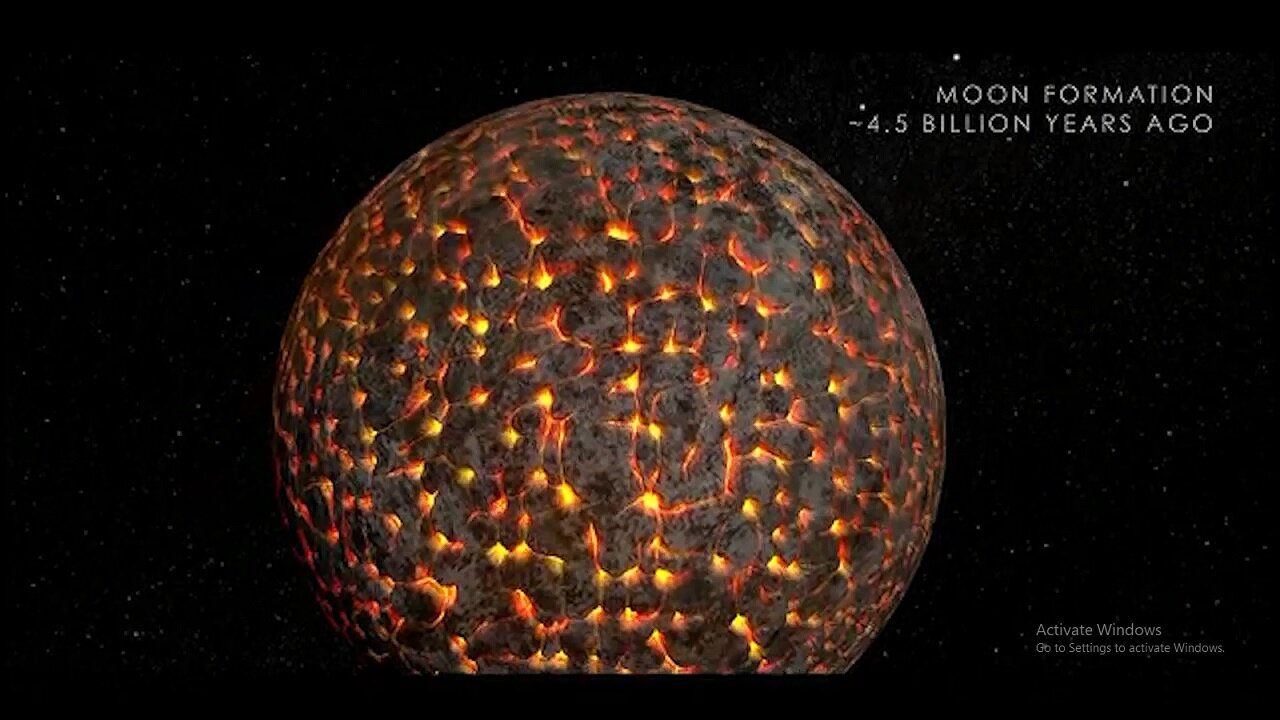Evolution of the Moon
The evolution of the Moon refers to the processes and events that have shaped the Moon over billions of years. While there are several theories about the Moon's origin, the most widely accepted one is the Giant Impact Hypothesis.
According to this hypothesis, around 4.5 billion years ago, a Mars-sized object called Theia collided with the early Earth. The impact resulted in the ejection of debris, which eventually coalesced to form the Moon. Initially, the Moon was much closer to the Earth and orbited it much more rapidly than it does today.
Over time, the Moon gradually moved away from the Earth due to tidal interactions. The gravitational pull of the Moon causes tides on Earth, and these tides exerted a gravitational force on the Moon as well. This interaction gradually slowed down the Moon's rotation and caused it to move further away from the Earth.
The Moon's surface has been shaped by various geological processes, including impact cratering, volcanic activity, and tectonic forces. The Moon lacks a significant atmosphere, which means that erosion and weathering, as we see on Earth, are absent. As a result, many of the Moon's craters and surface features have remained relatively unchanged over time.
The Moon's volcanic activity was most prevalent around 3 to 4 billion years ago, resulting in the formation of large lava plains called maria. These maria are visible as dark patches on the Moon's surface.
In recent decades, scientific missions, such as the Apollo program and more recent lunar missions, have provided us with detailed information about the Moon's composition, structure, and geological history. Through these missions, scientists have gained insights into the Moon's evolution and its relationship with the Earth.
Overall, the study of the Moon's evolution is ongoing, and further research and exploration are necessary to fully understand its history and the processes that have shaped it.
-
 52:05
52:05
PMG
9 hours agoWhat Does Freedom Cost? Steven Solomon's On-the-Ground Documentary in Ukraine
318 -
 2:38:54
2:38:54
TimcastIRL
10 hours agoElon Secret Child Scandal ERUPTS, Ashley St. Clair Story Goes Viral w/Bethany Mandel | Timcast IRL
157K106 -
 2:04:52
2:04:52
Kim Iversen
12 hours agoElon's Pumping Out Babies Like They're Tesla Model 3's | EU Panics Over Peace Talks, Wants More War
151K150 -
 1:05:35
1:05:35
Man in America
15 hours agoFort Knox & Trump’s Secret Gold Move—The Financial Reset NO ONE Is Ready For?
96.2K124 -
 2:21:20
2:21:20
Robert Gouveia
12 hours agoTrump Goes to SCOTUS! Judge CAVES on DOGE? Fani Willis Not Happy!
114K32 -
 20:41
20:41
Stephen Gardner
12 hours ago🔥You Won't BELIEVE What JUST Happened To Don Trump Jr.!!
119K201 -
 58:00
58:00
The StoneZONE with Roger Stone
10 hours agoEuropean Leaders Resist Trump Peace Overtures To Their Own Demise | The StoneZONE w/ Roger Stone
81.7K12 -
 9:29
9:29
AlaskanBallistics
12 hours ago $8.88 earnedWyoming Suppressors and Rifles at Shot Show 2025
99.2K6 -
 1:06:40
1:06:40
Donald Trump Jr.
16 hours agoThe Left is Taking one L After Another, Live with Michael Knowles | Triggered Ep. 217
188K133 -
 47:17
47:17
Kimberly Guilfoyle
15 hours agoWoke Gets DOGE’d, Live with AJ Rice & Jarrett Stepman | Ep. 197
137K44
